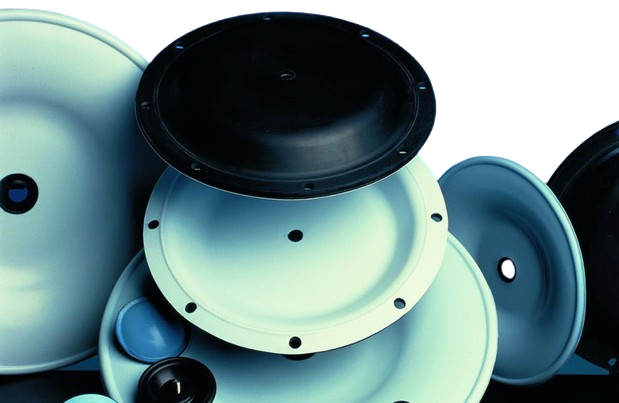

Rubber Diaphragm:
The main function of a diaphragm is to act as a seal between two chambers. Rubber diaphragms offer a simple yet effective sealing solution for pumps, valves, and many other control devices across a wide range of industrial applications. We have many years of experience in the design, development, and manufacture of high-quality rubber diaphragms and custom-molded diaphragms. We provide rubber diaphragms for use in aggressive chemicals and for added durability and high tolerance..


A rubber diaphragm is a flexible sealing element typically made from rubber or elastomeric materials like silicone, neoprene, or nitrile. It’s designed to create a barrier or seal between two components, allowing for controlled movement or pressure regulation while maintaining separation.
Rubber diaphragms are commonly used in various mechanical devices, valves, pumps, actuators, and other industrial applications due to their elasticity, durability, and ability to withstand different operating conditions. They serve multiple purposes, including:
- Sealing: Rubber diaphragms prevent leaks by sealing the interface between two surfaces or components, ensuring the containment of liquids, gases, or other substances.
- Pressure Regulation: They can control and regulate pressure by flexing or deforming in response to changes in pressure differentials, helping to maintain desired levels within a system.
- Movement Transmission: Diaphragms can transfer force or motion from one part to another while maintaining separation, often used in actuators or pumps where controlled movement is essential.
- Vibration Isolation: In some applications, rubber diaphragms are employed to absorb or dampen vibrations, reducing noise or preventing damage caused by excessive shaking.
Rubber diaphragms come in various shapes, sizes, and compositions depending on the specific application requirements. They are manufactured through processes like molding, extrusion, or cutting, and their properties can be tailored to meet the needs of different industries and environments.
These diaphragms must be selected carefully to ensure compatibility with the intended operating conditions, such as temperature, pressure, chemical exposure, and mechanical stresses, to ensure optimal performance and longevity.
